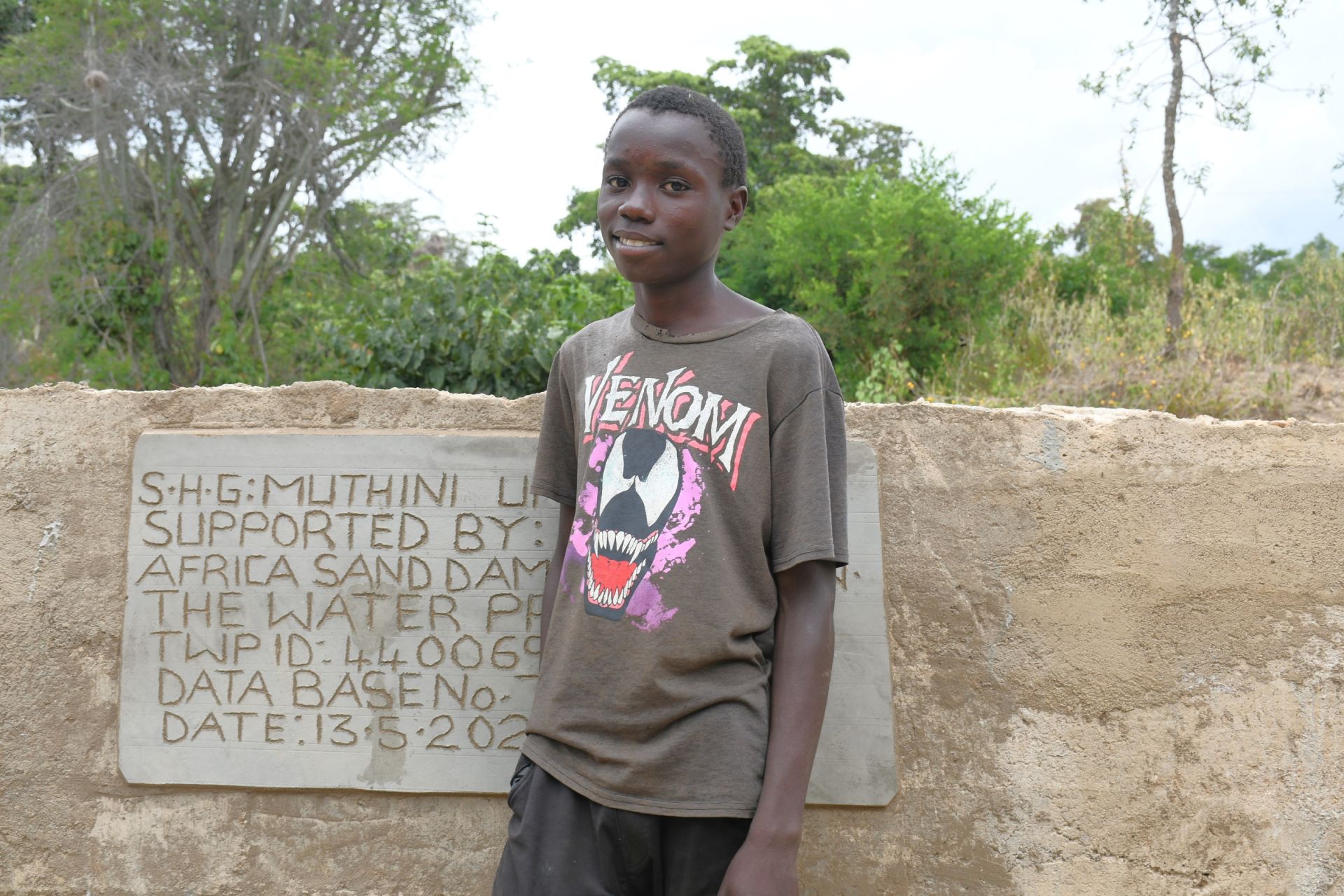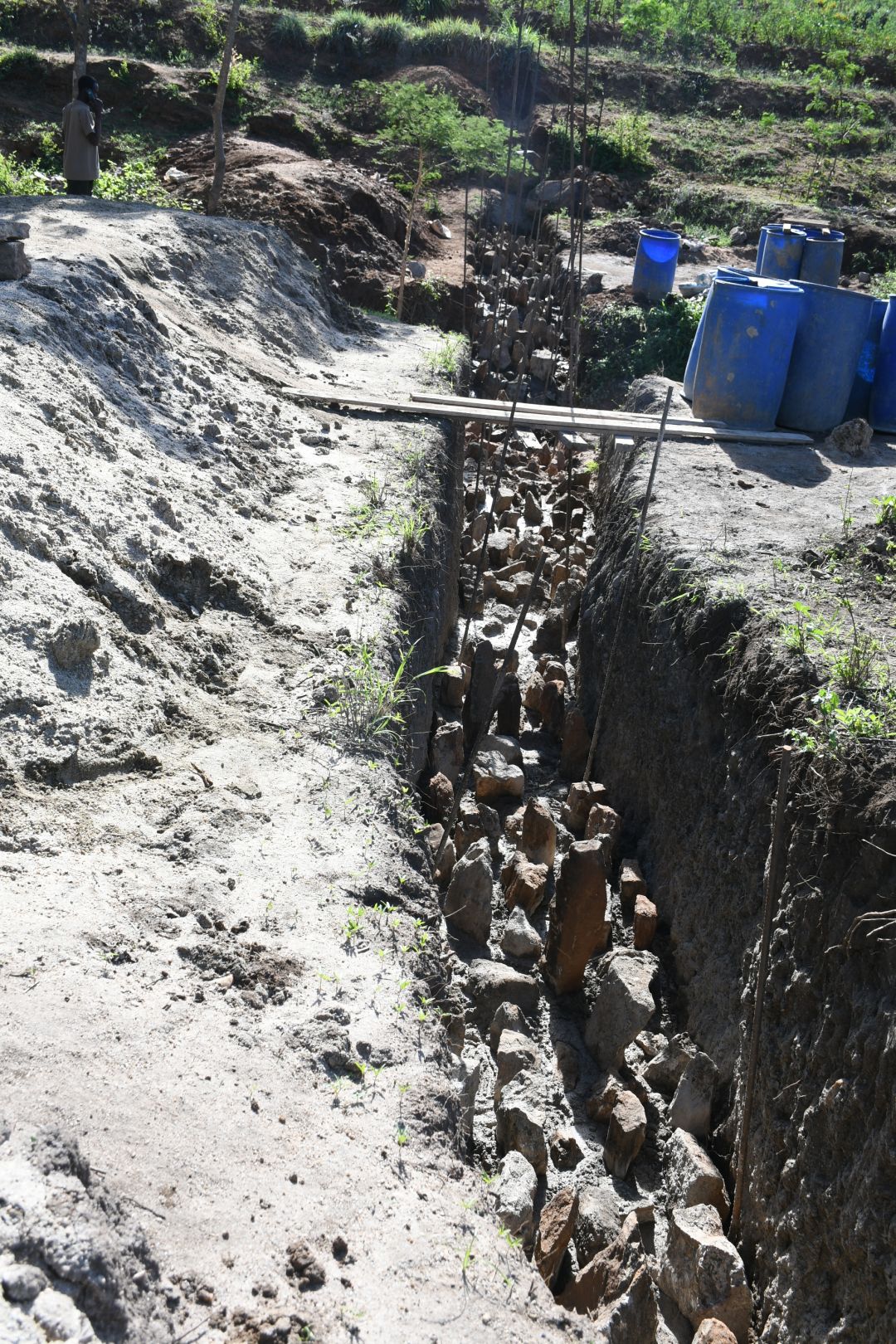The 1,000 community members who live in the Muthini Upendo Community struggle to access sufficient water. They have two options for water: They can make a three-hour roundtrip to collect water from a dug community well or resort to collecting water from an open earth dam an hour away. Both options consume their time and energy, leaving little for much else.
Neither of the options is ideal. The well is often overcrowded and, at times, must be shut down to allow the water to recharge. Collecting water from the earth dam, which has no restrictions, may seem like a better option, but it is shared with local animals, so it is almost certainly contaminated.

The earth dam. Note the animals on the right side near the water source.
"We live in a dry region that experiences several months of drought in a year, and when it rains, we do not have the capacity to harvest most of it; thus, water just flows through the rivers before it quickly dries up," said 50-year-old farmer Dickson Musee.

Dickson.
"Life is very [difficult] without water because we need water for our livestock, poultry, and farming," he continued.
"The current sources are located very far away from most of the community members; hence, they spend a lot of time going to the current sources and returning home. Most of their effort and time is therefore wasted on acquiring water, which could be expended on preparing their lands, searching for local employment, or handling household chores at home," said Field Officer Alex Koech.
"It is also difficult to make several trips to the water points due to the unfavorable terrain and distance involved, which has led to poor hygiene. The water quantity in these sources also reduces as the drought progresses, which makes getting water for irrigating their crops difficult, thus leading to malnutrition and poor income."

Dickson (second) collecting large rocks for the future sand dam project.
Dickson hopes to focus on farming so he can build a brighter future for his family, but without access to sufficient water, that is impossible.
"These community members are farmers who hope to feed their families from their farm produce and acquire an income from it. The proposed project will avail enough water for them to irrigate their gardens, and they will also get time as well as energy to focus on their farming because they will no longer be walking far in search of water," concluded Alex.
Solving the water crisis in this community will require a multifaceted system that will work together to create a sustainable water source that will serve this community for years to come.
Steps Toward a Solution
Our technical experts worked with the local community to identify the most effective solution to their water crisis. Together, they decided to construct a sand dam and dug well.
Sand Dam
Sand dams are sought-after, climate-smart, and lasting water solutions, providing hope and resilience to communities in arid Southeastern Kenya. Think of them like giant sandboxes constructed in seasonal rivers that typically quickly dry up after the rainy season. Instead of holding water like traditional dams, they collect sand and silt.
When infrequent rains come, these dams catch a percentage of the river's flow, letting most of the water continue downstream to other communities. But here's the magic: the sand they collect acts like a natural filter, holding onto water long after the river's gone dry. Then, wells are constructed nearby, creating a reliable water source even during the driest times.
And the benefits don't stop there! In communities impacted by climate change, sand dams replenish groundwater and prevent soil erosion. Even during severe droughts, the consistent water supply from these sand dams allows farmers to thrive, giving way for enough food not only for their families but also to sell in local markets.
The most remarkable aspect of sand dams is how they involve the local community every step of the way, giving them a sense of ownership and pride in solving their own water shortage and managing their own water resources.
This sand dam will be connected to a dug well to make the water more accessible.
Community Education & Ownership
Hygiene and sanitation training are integral to our water projects. Training is tailored to each community's specific needs and includes key topics such as proper water handling, improved hygiene practices, disease transmission prevention, and care of the new water point. Safe water and improved hygiene habits foster a healthier future for everyone in the community. Encouraged and supported by the guidance of our team, a water user committee representative of the community's diverse members assumes responsibility for maintaining the water point, often gathering fees to ensure its upkeep.

 Sand Dam
Sand Dam
 Rehabilitation Project
Rehabilitation Project




























